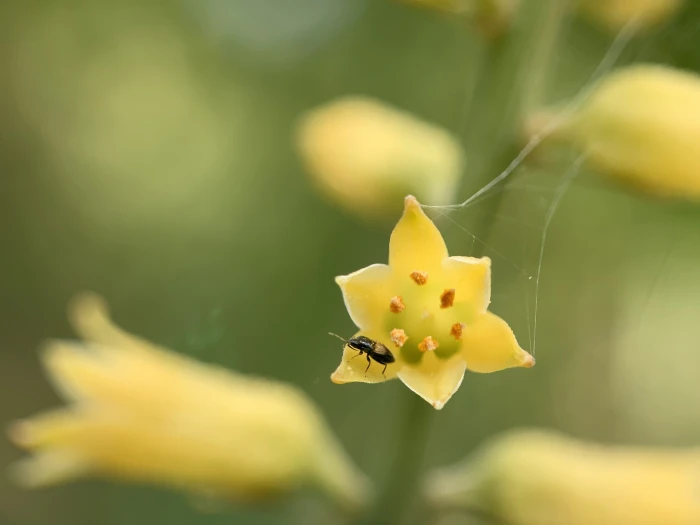Yellow Colicroot
(Aletris lutea)
Yellow Colicroot (Aletris lutea)
/
/

mark-groeneveld
CC BY 4.0
Image By:
mark-groeneveld
Recorded By:
Copyright:
CC BY 4.0
Copyright Notice:
Photo by: mark-groeneveld | License Type: CC BY 4.0 | License URL: http://creativecommons.org/licenses/by/4.0/ | Rights Holder: mark-groeneveld | Publisher: iNaturalist | Date Created: 2020-04-11T16:53:54Z |















































Estimated Native Range
Climate Requirements for Vaughan, Canada
| This Plant | Your Site | Plant Suitability for Your Location | ||
|---|---|---|---|---|
| • Precipitation | 46" - 67" | 34" | Your precipitation may be insufficient for this plant. Irrigate N" / year. | Irrigate N" / year |
| • High Temp. | 89°F - 93°F | 80°F | OK, but your summers are milder than normal for this plant | OK |
| • Low Temp. | 37°F - 63°F | 13°F | Your winter temperatures may be too cold for this plant | Too cold |
This plant should grow well at your location with about N inches per year (Y minutes per month) of irrigation.
Summary
Aletris lutea, commonly known as Yellow Colicroot, is a deciduous perennial herb native to open woodlands, moist prairies, and savannas in the southeastern United States, particularly in the Gulf States. It typically grows to a height and width of 2-4 feet (0.6-1.2 meters), featuring narrow, grass-like leaves and upright flower spikes. The plant produces small, tubular yellow flowers that bloom in late spring to early summer, which are moderately showy and attract pollinators. The flowers are followed by capsule fruits that contain numerous seeds.
Yellow Colicroot is valued for its unique flowering spikes and adaptability to various garden settings. It can be used in native plant gardens, as part of a perennial border, or in naturalized areas where its winter flowering provides seasonal interest. While it prefers full sun to part shade, it is also tolerant of a range of soil types, provided they have good drainage. This plant is relatively low maintenance but may require supplemental water during prolonged dry periods. It is not commonly afflicted by serious pests or diseases, making it a resilient choice for gardeners.CC BY-SA 4.0
Yellow Colicroot is valued for its unique flowering spikes and adaptability to various garden settings. It can be used in native plant gardens, as part of a perennial border, or in naturalized areas where its winter flowering provides seasonal interest. While it prefers full sun to part shade, it is also tolerant of a range of soil types, provided they have good drainage. This plant is relatively low maintenance but may require supplemental water during prolonged dry periods. It is not commonly afflicted by serious pests or diseases, making it a resilient choice for gardeners.CC BY-SA 4.0
Plant Description
- Plant Type: Herb
- Height: 2-3.5 feet
- Width: 1.5-3.5 feet
- Growth Rate: Moderate
- Flower Color: Yellow
- Flowering Season: Winter
- Leaf Retention: Deciduous
Growth Requirements
- Sun: Full Sun, Part Shade
- Water: Medium
- Drainage: Fast
Common Uses
Bee Garden, Border Plant, Butterfly Garden, Salt Tolerant, Showy Flowers
Natural Habitat
Open woodlands, moist prairies, and savannas
Other Names
Common Names: Yellow Colic-Root
Scientific Names: Aletris lutea, Aletris lutea f. albiflora
GBIF Accepted Name: Aletris lutea Small